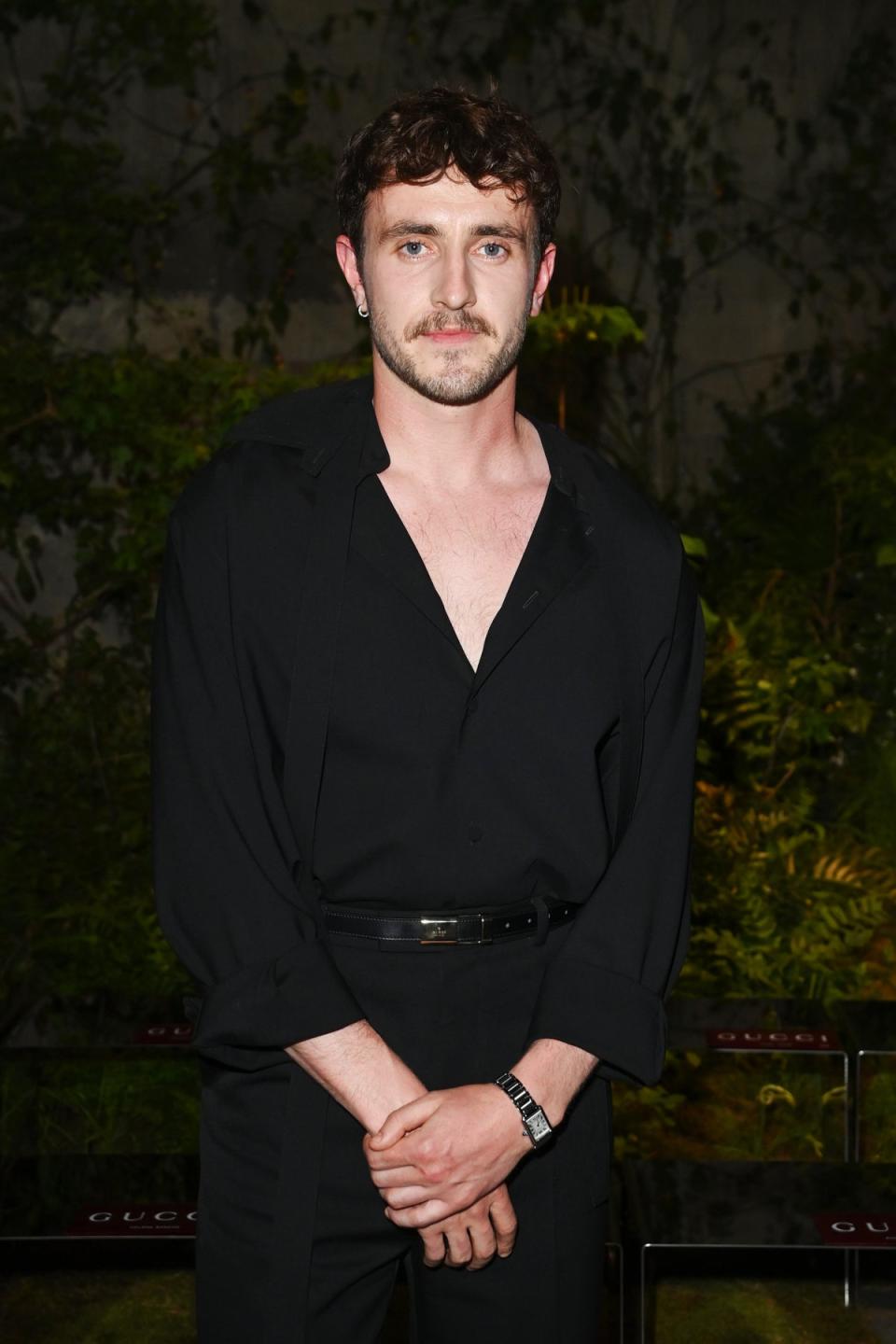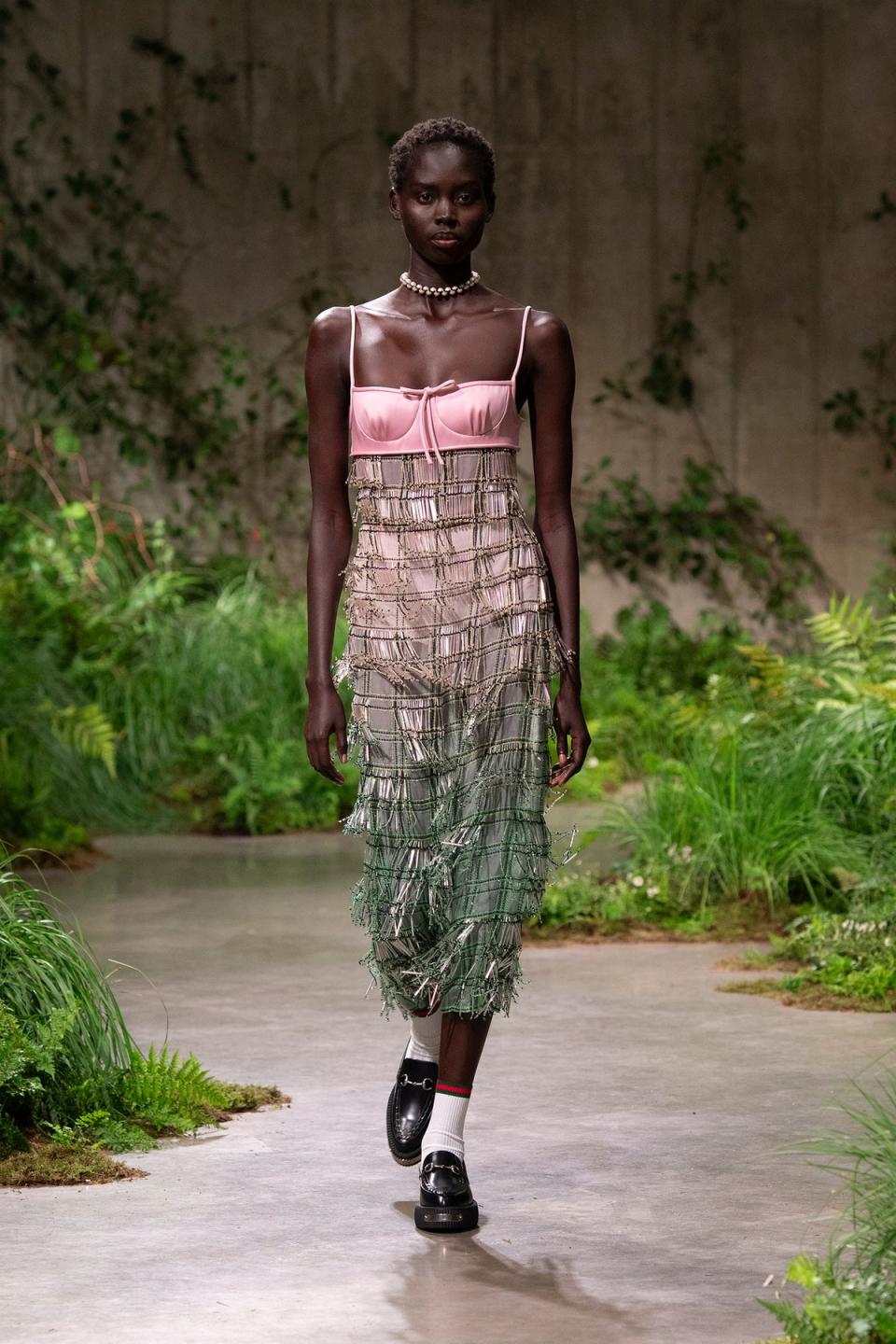Gucci gets into its new groove at Tate Modern London show — with help from Kate Moss and Debbie Harry

Monday nights in Southwark aren’t usually that glamorous, but Italian superbrand Gucci certainly knows how to give a sexy polish to the start of the week.
After a cocktail affair at the Savoy the brand’s six hundred guests were whisked over to Tate Modern where Salma Hayek Pinault (wife to Gucci’s owner Kering head Francois-Henri Pinault), Kate Moss, Paul Mescal, Daisy Edgar-Jones, Dua Lipa, Solange Knowles, Little Simz, Andrew Scott, Demi Moore and Debbie Harry perched on the front row for its Cruise show.

Sabato De Sarno, Gucci’s incumbent creative director is marking his first year anniversary at the house, and has something to prove. Last month, Kering issued a warning that it expects Gucci’s profits to fall to around 40 to 45 per cent from the same time last year. De Sarno’s first collection - which he showed in September last year - has only just started to hit the shop floor. His mission so far has been to set a palate cleanser to his predecessor Alessandro Michele’s decadent, maximalist style. His more minimal-leaning yet elegant wipe cleaning has been met with a mixed reaction, with some lamenting a lack of thrills which Michele delivered in spades.
Michele also showed a Cruise show here - in 2016, he took his opulent vision to Westminster Abbey’s cloisters. In choosing London for his first out-of-season Cruise show De Sarno offered that “I owe a lot to this city, it has welcomed and listened to me. Tate Modern is the perfect cross-section to narrate the city’s essence, with its great Turbine Hall that welcomes and gathers everyone, and with the Tanks, generators of ideas.”

He pitched his more modern approach deep in the Tanks of the Tate, which had been decorated with a cacophony of greenery bursting out of the ceiling, floor and across pillars (styled from 10,000 plants which will be donated to local community projects) offering a kind of juxtaposition which he underscored in the collection itself - a study in the unexpected style non-rules London is synonymous with. Gritty meets pretty if you will, or as De Sarno puts it, “Fashion design is a means to study, explore, interpret. After having expressed my ideas of desirability and sensuality, this is another piece of me, more romantic, more contradictory. I like taking something that we think we know and breaking away from its rules, taking it as far as it can go, without ever distorting it. Bringing it towards its opposite and finding harmony.”

His collection sought to blend Englishness with Italian flourish, it was there in white chore jackets worn over sheer floral sweet yellow daisy (a key motif) applique midi skirts worn with sports socks and loafers; as well as elaborate beaded shifts worn with those same ribbed white socks, languid black one-shouldered slips with rubber soled, black tied ballet flats; leaning into a Seventies mood with plenty of brown suede - blazers paired with chiffon tops and loose jeans falling over those square toe ballet flats.
A knowing sense of the mundane came via the mesh supermarket bags carried alongside the gold logoed handbags, and with oversized slouchy bomber jackets paired with beautiful pleated gowns in a soft green.



Of course this isn’t just about perception, there was a considered commercial angle here too to help bolster those tricky financial predictions. A new shoulder bag, the Gucci Blondie - a re-envisioning of early Seventies piece - was on the catwalk and in the arms of Gucci’s front row acolytes, with three iterations available to purchase at the brand’s outposts for a limited period until 24th May. Gucci will be hoping that scarcity will make for a tempting and till-ringing proposition.
Gucci the brand has history here, its founder Guccio Gucci worked as a porter at The Savoy, a stint which inspired him to start the luggage company in 1921. In Tom Ford’s Nineties era, he even stationed his atelier here. De Sarno’s love letter to the city followed in these footsteps, melding the city’s rugged sensibility with a haute, luxury eye. It is of course always ego-bolstering to see your own city romanticised in the way only an outsider can. Or as De Sarno entitled it, ‘We’ll Always Have London.’ Don’t tell Paris.













